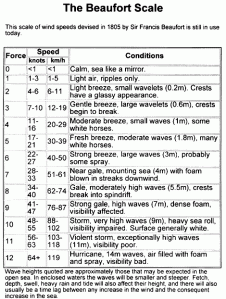The wind enables a sailboat to move through the water by supplying a force that is captured by the sails. The wind allows the vessel to sail every direction except directly into the wind. Before you get ready to harness the wind on your sailboat, make sure you understand the different attributes of the wind by reading this post.
During your time on the water, it’s important to constantly check where the wind is coming from. Any change in wind speed and direction may indicate a change in weather, and/or a change in how you are sailing your boat. Knowing that it is difficult to maneuver your boat into the directly into the wind, you should plan your sail so you are not sailing on this difficult point of sail when you are headed back to the dock for the day.
A general rule is that the closer your boat is pointed to where the wind is coming from, the closer your sails should be trimmed to the center of your boat. When you are sailing away from the wind your sails should be let all the way out. In very general terms, you should trim your sails so that each sail is as perpendicular to the direction of the wind as possible. You can tell your sails are trimmed correctly because they are not luffing (shaking). To assure your sails are trimming correctly, ease your sails out until they luff and then pull them back in just until the stop shaking. To learn more about trimming your sails, check out the posting on the Points of Sail.
Filed under: Fundamentals, Ocean, Air and Stars | Tagged: sailing, weather, wind | Leave a comment »





